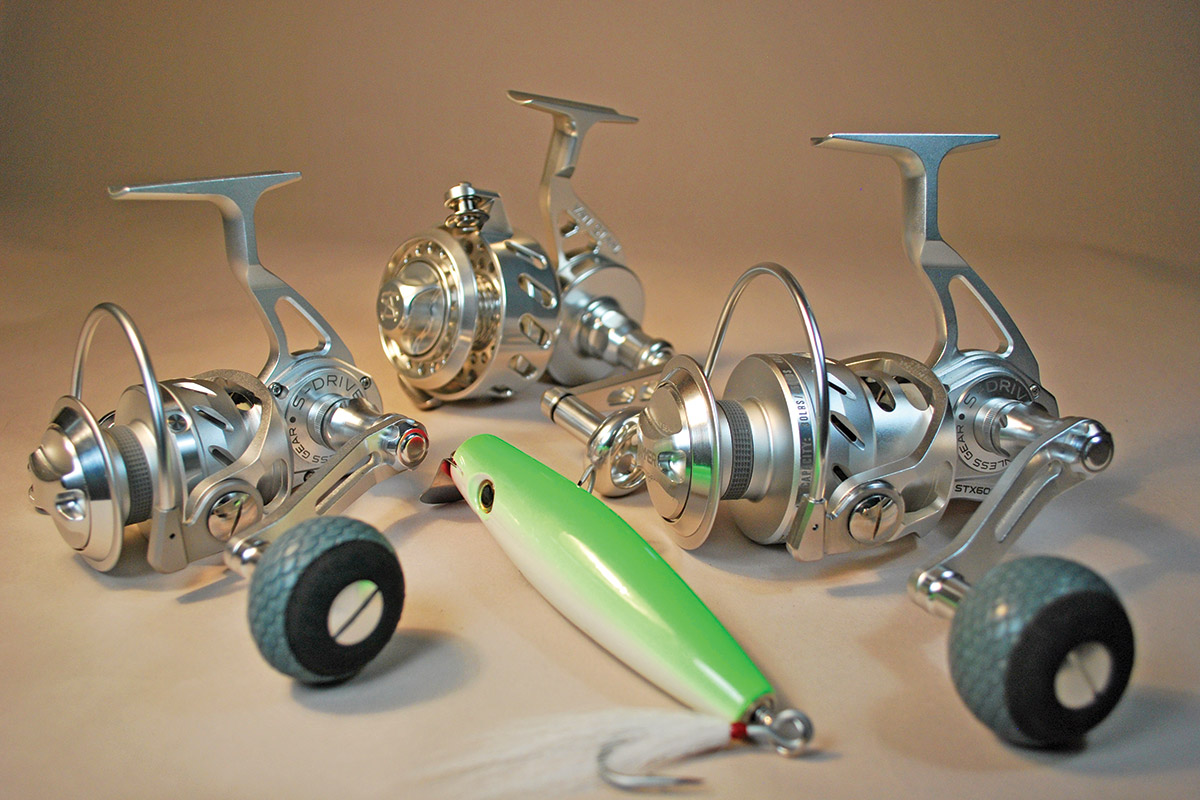
The sun wasn’t even a hint on the horizon as a half-dozen surf rats were gearing up for the day’s adventures. As I struggled into my waders, one of the guys nearby in the parking lot called out, “Anyone got any WD40®? Can’t get the bail on my reel to work right.” Looking in my trunk amid chaos of too much tackle and gear, I found a can of CorrosionX® and walked it over to the guy with the bail problem. As he sprayed the top end of his reel he complained that, “The reel is waterproof but the bail keeps hanging up.” I asked how often he cleaned or spray lubed the outside of his reel. His answer was that he sometimes hosed the reel off but it shouldn’t need anything else since it was WATERPROOF.
Wrong.
Over the past several years there have been introductions of water-resistant or truly waterproof spinning reels ready to do battle with the worst that the surf fishing environment can dish out. While most any quality spinning reel can easily handle the occasional wind-driven spray or the splash of a crashing wave, they can’t hold up to being submerged or regularly immersed because they aren’t sealed. That’s what makes the waterproof reels really waterproof. Using from five to 14 strategically-located individual seals or gaskets between parts or subcomponents keeps the water out. Most also have truly sealed stainless-steel ball bearings, too. Others rely on specialized lubricants to resist water intrusion at critical points. But one commonality among these reels is the foundation of a high level of precision manufacturing of each part. That “fit” of one part to the next helps assure that any seal or gasket used will be effective for a long time in heavy use.
The odds are high that the serious surf fisherman will certainly take an unexpected wave overhead, slip into a beach trough drop-off or stay too long out on the bar and have to really wet-wade back to the beach. Then, there’s the wetsuit guys that swim their tackle out to their distant rock casting platforms. All will submerge their reels at some time or other. If those reels aren’t sealed, it’s inevitable that water, salt and probably other contaminants will end up inside the reel. That’s where the high precision, most expensive parts are found, and they weren’t designed to be lubricated with saltwater!
Okay, you have and heavily use a waterproof spinning reel. Trip after trip, that reel is exposed to salt splash or spray and, all things being correct, it is bone dry inside. But the outside has collected salt and grit and probably sand, too. Any light oil that may have been used on the bail pivots, line roller, bail closing mechanisms, handle knob posts or any other exposed parts has, by now, been flushed from the reel. This is particularly true if you wash the reel with hose-pressure water after fishing. There is no lubricant left and contaminants have taken its place. Handle squeaking while you retrieve that shad? No lubricant, and now there is metal to metal contact with no protection.
The inside of the reel is fully protected by design and construction. But, you have to maintain the externals. For decades, I have habitually sprayed my reels with WD40, CRC, CorrosionX or any water-displacing spray lubricant after each use. No high-pressure hose at the dock or at home. That’s right, NO hose down. High-pressure water will penetrate non-sealed reels and cause problems with the expensive parts inside. All of those reels that I had used over the years were not sealed. They were just quality, off-the-shelf models. While I didn’t dunk them, they got wet quite often. Simply spraying with WD40 assured that they were ready to go on the next trip. On sealed reels, the internals are safe, but by hosing the reel off you’ll be power washing the externals and removing the factory-installed light oil lubricant needed by the parts that pivot or turn. That causes problems with function and increases wear that can add up to a, “Can’t get the bail on my reel to work right,” situation just when you need to get ready to fish.
The actual work you have to do is simple and begins with laying out a clean workspace; newspaper works well. Place the reel on the paper and spray it with WD40, CRC, CorrosionX or a similar product. Presuming that whatever has collected on the reel is now dried in place, let the spray work its magic and soften or dissolve the crud. These sprays are, by design, intended to not only displace water but to act as a cleaner and light lubricant wherever used. After 10 or 15 minutes take a clean rag and wipe off the excess. Do not dry the reel. The spray will have penetrated into the workings of the externals for further lubrication, and a light coating of the spray remaining on the reel surfaces is a help for future salt spray protection.




